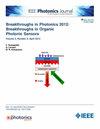唾液FTIR光谱和机器学习用于自闭症谱系障碍诊断的初步研究
IF 2.4
4区 工程技术
Q3 ENGINEERING, ELECTRICAL & ELECTRONIC
引用次数: 0
摘要
自闭症谱系障碍(ASD)的诊断仍然是一个挑战,由于缺乏具体的测试和生物标志物。自闭症谱系障碍(ASD)是一种影响个体一生的神经发育障碍,它的诊断使人们能够获得改善预后的治疗方法。唾液傅立叶变换红外光谱(FTIR)分析,以前没有报道,似乎是一个有前途的诊断工具ASD。本研究获得了19例ASD患儿和19例对照患儿的光谱。光谱特征表明,ASD和正常儿童分别以蛋白质二级结构、β-褶层结构和α-螺旋结构为主。支持向量机(SVM)诊断效果最佳,灵敏度92%,精密度94%,特异度95%。Shapley值分析了解光谱特征对SVM分类器识别出β-褶片和β-turn片负责分类的影响。结果表明基于唾液的FTIR在自闭症诊断中的潜力,需要进行大规模的试验。本文章由计算机程序翻译,如有差异,请以英文原文为准。
Saliva FTIR Spectra and Machine Learning for Autism Spectrum Disorder Diagnosis—Preliminary Study
The diagnosis of Autism Spectrum Disorder (ASD) remains a challenge due to the lack of specific tests and biological markers. ASD is a neurodevelopmental disorder that affects individuals throughout their lives, and its diagnosis allows access to treatments that improve their prognosis. Saliva analysis by Fourier Transform Infrared Spectroscopy (FTIR), which was not previously reported, appears to be a promising diagnostic tool for ASD. This study acquired spectra from samples of 19 ASD and 19 control children. Spectral signatures suggest the dominance of protein secondary structures, β-pleated sheet and α-helix structures in ASD and control children, respectively. Support Vector Machine (SVM) gave the best diagnosis, with sensitivity, precision, and specificity being 92%, 94%, and 95%, respectively. Shapley values analysis to understand the impact of spectral features on the SVM classifier identified β-pleated and β-turn sheets as responsible for classification. Results indicate the potential of saliva-based FTIR for autism diagnosis, warranting a large-scale trial.
求助全文
通过发布文献求助,成功后即可免费获取论文全文。
去求助
来源期刊

IEEE Photonics Journal
ENGINEERING, ELECTRICAL & ELECTRONIC-OPTICS
CiteScore
4.50
自引率
8.30%
发文量
489
审稿时长
1.4 months
期刊介绍:
Breakthroughs in the generation of light and in its control and utilization have given rise to the field of Photonics, a rapidly expanding area of science and technology with major technological and economic impact. Photonics integrates quantum electronics and optics to accelerate progress in the generation of novel photon sources and in their utilization in emerging applications at the micro and nano scales spanning from the far-infrared/THz to the x-ray region of the electromagnetic spectrum. IEEE Photonics Journal is an online-only journal dedicated to the rapid disclosure of top-quality peer-reviewed research at the forefront of all areas of photonics. Contributions addressing issues ranging from fundamental understanding to emerging technologies and applications are within the scope of the Journal. The Journal includes topics in: Photon sources from far infrared to X-rays, Photonics materials and engineered photonic structures, Integrated optics and optoelectronic, Ultrafast, attosecond, high field and short wavelength photonics, Biophotonics, including DNA photonics, Nanophotonics, Magnetophotonics, Fundamentals of light propagation and interaction; nonlinear effects, Optical data storage, Fiber optics and optical communications devices, systems, and technologies, Micro Opto Electro Mechanical Systems (MOEMS), Microwave photonics, Optical Sensors.
 求助内容:
求助内容: 应助结果提醒方式:
应助结果提醒方式:


